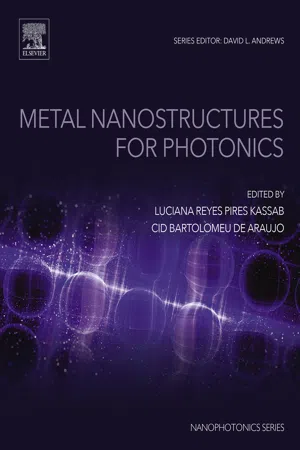
Metal Nanostructures for Photonics
Luciana Reyes Pires Kassab,Cid Bartolomeu De Araujo
- 346 pagine
- English
- ePUB (disponibile sull'app)
- Disponibile su iOS e Android
Metal Nanostructures for Photonics
Luciana Reyes Pires Kassab,Cid Bartolomeu De Araujo
Informazioni sul libro
Metal Nanostructures for Photonics presents updates on the development of materials with enhanced optical properties and the demand for novel metal-dielectric nanocomposites and nanostructured materials. The book covers various aspects of metal-dielectric nanocomposites and metallic-nanostructures and illustrates techniques used to prepare and characterize materials and their physical properties. It focuses on three main sections, nanocomposites with enhanced luminescence properties due to contributions of metal nanoparticles hosted in photonic glasses, near and far-field optical phenomena, and the optical response of single nanoparticles that reveal quantum phenomena in the nanoscale, amongst other topics.
This book will serve as an important research reference for materials scientists who want to learn more on how a range of metallic nanostructured materials are used in photonics.
- Sets out the properties of a range of metal-dielectric nanostructures and nanocomposites, along with the use cases for each in photonics
- Discusses the pros and cons of using different metallic nanostructures for different photonic applications
- Includes case studies that illustrate how metallic nanostructures have successfully been applied in photonics
Domande frequenti
Informazioni
Nonlinear Optics With Metal-Dielectric Nanocomposites
† Institute of Physics, Universidad Nacional Autónoma de México, Ciudad de México, Mexico